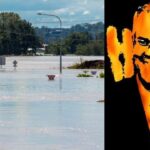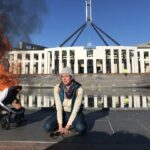Does Australia Need Stronger Environmental Protection Laws?

A legal decision by the full bench of the Federal Court has determined that the Australian Government has no duty of care to protect us, or our children, from climate harm.
Three Federal Court judges have unanimously reversed a previous court finding, after an appeal by the Environment Minister Sussan Ley.
Long-running legal battle
The original decision in a case taken to court by eight children in the year 2020, who were seeking to block the expansion of Whitehaven Coal’s Vickery Coal mine in Northern New South Wales. The mine is expected to produce an additional 100 million tonnes of carbon emissions, equating to as much as 20% of Australia’s carbon footprint.
The Federal Court decision denied the children’s bid to stop the expansion, but it did rule that as Environment Minister, Ms Ley has a duty of reasonable care to not cause the children personal injury when exercising her legislative decision-making powers regarding the mine.
At the time, the Federal Court’s decision was described as a “landmark ruling” that would potentially open avenues for legal challenges to the Government’s decisions with regard to coal projects.
Also at the time, Ms Ley indicated her intention to challenge the decision. Her appeal has now been successful, and the ruling means that essentially neither the minister, nor the government, have a duty of care to protect young people from the climate crisis when assessing fossil fuel developments.
Protection of the public is not a government responsibility under current laws
Each of the Justices had their own reasons for reaching the unanimous decision. Chief Justice James Allsop determined that decisions about mining approvals belong to the executive arm of government — ministers of the day — and not the judiciary because court processes are not suitable for determining matters of public policy.
He also said that the protection of the public from personal injury caused by the effects of climate change was not a responsibility of the environment Minister under Australia’s current environment laws.
However, in addition to that, Justice Allsop also noted that nobody involved in the case had disputed evidence presented to the court about climate change and the “dangers to the world and humanity, including to Australians, in the future”.
Many would argue that the future is already here – certainly those living on the eastern coast which has recently been bombarded with floods and rain.
Thousands of people are homeless and jobless and homes and businesses right down the eastern coast have suffered significant damage – at a time when they were only just beginning to recover from the raging Summer bushfires of 2019 followed by two-years of Covid-19 pandemic lockdowns and travel restrictions.
The legal team representing the children, does have the option of appealing this decision in the High Court. It’s unclear whether it will do so.
Unaccountable for the decisions they make
But the decision is a disappointing blow to those Australians who see the Federal Government’s desire to cling to fossil fuels as completely neanderthal thinking, when the rest of the world is moving forward to renewable energies, and making big strides towards reducing emissions.
The Federal Court decision, in particular Justice Allsop’s statements, also highlight how difficult it is to make government officials accountable for their decision-making.
Inaction on climate change has been a notable hallmark of the Morrison Government along with successive prior governments. What has become clear in recent years though is the devastating consequences of rain bombs, floods and fires.
Prime Minister Scott Morrison recently remarked while visiting flood ravaged regions that Australia is becoming ‘harder to live in’ because of the frequency and ferocity of natural disasters.
Thousands of climate refugees
This is a man whose government has steadfastly refused to act on climate change strategies, and in fact famously carried a lump of coal into Parliament to accompany his verbal tirade about ‘coal-a-phobia.
His government has continued to push the climate-change denial narrative, irrespective of what years of science research says about the negative effects of coal or what the science says about Australia’s suitability as a place to produce other, cleaner energy, for example, from the sun.
Last year, data published by Australian think tank IEP (Institute for Economics and Peace) predicted that at least 1.2 billion people could be displaced by such climate-related events by 2050.
Climate disasters leave people displaced, homeless and jobless. They worsen poverty, create food insecurity and can cut off access to natural resources. They can lead to instability, and violence. Often, people flee – making them climate refugees. All of this is clearly on display in Lismore right now. It is impossible not to see.
More than 70% of businesses do not have flood insurance, primarily because it’s too expensive. Many homeowners don’t have it either. A significant number of homes are now completely uninhabitable or have been deemed unsound by safety assessors.
With no functioning business locally, people are without jobs. The region was cut off from food, electricity, water, petrol, and internet connections for more than a week. The ADF was, as has been widely reported, ‘slow to respond’ meaning that the community really just had to fend for itself.
Insurers will, where appropriate, honour their responsibilities. Huge public donations have been made to the region. But the Government has been left to finance the majority of the cleanup and the rebuild, which will be enormous if Lismore is eventually relocated. It doesn’t take any kind of mathematical genius to see that this funding strategy is simply not sustainable economics.
Until now, much of the research around climate refugees has focused on poorer countries, such as Afghanistan and Mozambique … but Australia is also at great risk.
We need leaders who recognise the imminent threat and the long term consequences, and who will implement a strategy that is two-fold: firstly which works to mitigate flood and fire risk where possible, and secondly which works to reduce the effects of climate change over the longer term, for the generations to come.
This means turning away from fossil fuels. Aside from their environmental impact, let’s not forget that the fossil fuel companies are regularly in Australia’s list of top tax dodgers too.







